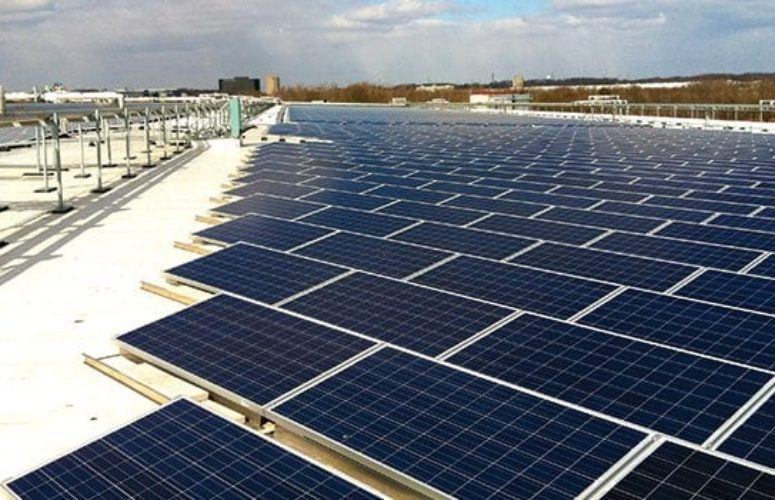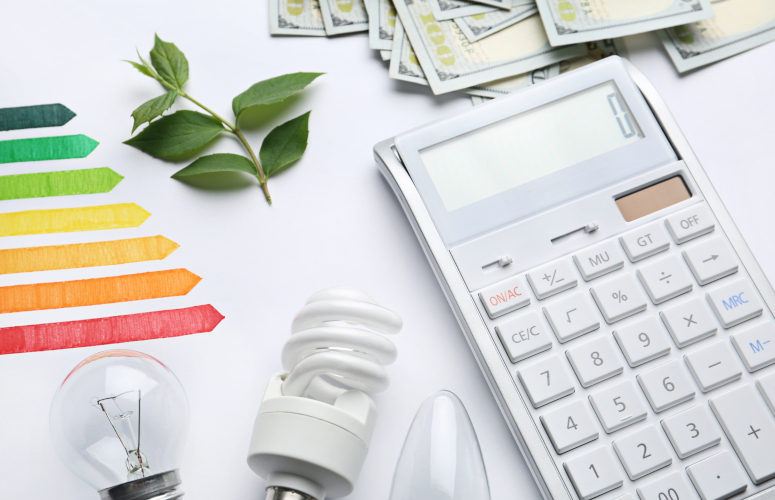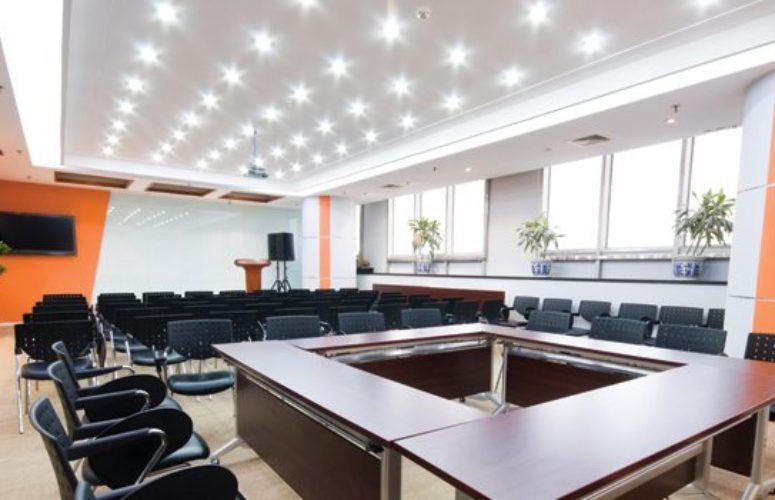
Energy-Efficiency Cost Savings
A variety of options are available for businesses of all shapes and sizes.
By Jennifer Lesser, Contributing Writer On May 15, 2017Whether a company is large or small, every New Jersey business owner has access to opportunities to reduce their utility bills and use energy more efficiently. From retrofitting an office building’s lighting system to installing solar panels on the roof, the options for business owners to save money – and make better use of their resources – are endless.
According to Richard S. Mroz, president of the New Jersey Board of Public Utilities (NJBPU), New Jersey has a long history of helping residents and businesses use energy more efficiently: Over the past 15 years, the state has invested some $3 billion in renewables and energy efficiency programs. “These kinds of investments have reaped big savings that have gone directly to helping businesses boost their bottom lines,” Mroz says.
The NJBPU offers a wide spectrum of services to help businesses save money by cutting their energy costs. It all starts with an audit of their facilities, from the lighting to heating and cooling systems. “From there, we can start offering them advice on measures they can take to become more energy efficient, like upgrading their HVAC systems, or pointing them in the direction of more significant measures like investing in combined heat and power (CHP),” he says.
Mroz notes that the average length of time before businesses see a return on their investment might be as early as two-and-a-half years – and there’s an abundance of financing options. “The average direct install project might fall within the $30,000 range, but the business owner could only be responsible for picking up $9,000 of that,” he says.
According to Joseph Prusik, manager of DSM asset management at PSEG, one of the easiest and least expensive approaches to becoming more energy efficient is through lighting retrofits. “One of the first things to think about is where is the most energy used – and for most office buildings, the majority of energy usage is tied up in the lighting and air conditioning systems, with systems like equipment or refrigeration making up the other 25 percent,” Prusik explains.
That’s why PSEG offers an array of programs to help business owners determine how their energy is being used and the best approaches to cut costs and run their business more efficiently. PSEG’s Direct Install Program has helped an array of organizations and non-profits become more energy efficient and save money. The company is now offering the Direct Install Program to small business customers located in Urban Enterprise Zones. The program aims to help businesses reduce their energy costs up to 30 percent by offering a free on-site energy audit of a facility’s gas – and electric-consuming equipment – and then helps to finance a portion of the installation or any recommended energy conservation measures.
According to Prusik, business owners should consider upgrading to LED lighting and installing a reflector kit, or retrofitting the lights to rely on an occupancy censor to turn off light fixtures automatically when a room is vacant. “Within the last couple of years, there has been a lot of improvement in lighting and LED technology – but even though it’s cutting-edge, it’s still very cost-effective,” Prusik adds. “One of our biggest programs revolves around lighting retrofits in which businesses can expect to see a return on their investment within just two years.”
On the heating and cooling side, Prusik notes that thermostats have also continued to become more technologically advanced, with sophisticated automated controls that any employer can manage to program and control the amount of energy their business is using. “A quick and easy cost-saving tip is upgrading to a programmable thermostat – because if nobody is in the office, there’s no sense in heating and cooling your building. It’s a waste of money and resources,” he adds.
Bill Kenworthy, director of product management for the distributed energy division at Direct Energy, agrees that energy monitoring systems can be an ideal way for a business to begin dramatically cutting energy costs. “Monitoring solutions are the opening move for many businesses … there are currently millions of air conditioners, for example, that don’t have any sort of monitoring … so when an employee raises the thermostat or your cleaning staff leaves your air conditioning on all day on a Sunday, upgrading to a system with monitoring controls could be a $200 solution that leads to massive cost and energy savings down the line,” he explains.
Another step business owners can take is to team up with a company like Direct Energy to more closely monitor their overall energy output. “If there are several days over the summer when the temperatures are in the 80s and we know the electrical grid is strained, we’ll call the business owner and make suggestions about turning off the lights or shutting down an elevator. If you have any sort of operational flexibility, then it’s a program that pays for itself very quickly,” he adds.
Many of the larger-scale projects of the future revolve around on-site energy generation, where businesses are able to rely on their own sources of energy, like natural gas, when a blackout or natural disaster occurs. “If customers take the opportunity to become more energy efficient, it can definitely help them save money … but it also offers them the chance to become more resilient,” Kenworthy adds. “In a hurricane or typical summertime blackout, a grocery store chain has good reason to want to be able to keep food in the refrigerator or serve their customers for one extra day. With the right energy-efficiency strategy, that’s a possibility.”
Mroz notes that the BPU is partnering with the state’s utility companies to examine the future of energy efficiency for local businesses, and they’re embracing ever-changing technology that would allow for an increasing number of on-site generation systems. “These systems can include any combination of energy-efficient control systems to on-site generation like solar or battery storage,” he says. “We’re always looking for ways to continue to support and deliver these types of measures, as they not only deliver cost-savings to business owners, but provide a level of resiliency that was never before possible.”
In the Garden State, solar energy remains one of the most popular ways for businesses to cut energy costs. The best news of all is that the cost of solar installation projects have come down tremendously, but can still save both small and large businesses a lot of money on their energy bills. “From the types of modules to the equipment that we use, everything is becoming more efficient. So, if you have a 500,000-square-foot roof, you can get significantly more capacity on that same roof than you could even just five years ago,” asserts Jamie Resor, CEO of groSolar.
According to Resor, there are two approaches to begin a solar installation project: potential business customers can choose to sign a long-term contract to purchase their solar energy at a set price, or companies may opt to purchase the energy and monetize it themselves. When Clean Harbors Environmental Services decided to install a solar power system at its Bridgeport facility, the $6.5-million project was financed with capital funding. Prior to the installation, the facility’s annual electric bill was $250,000. More than 6,500 photovoltaic modules were installed on top of a capped landfill, and the project successfully offset more than 90 percent of the facility’s annual electric bill.
“We’re seeing the adoption rate go up quite a bit for our corporate customers; the benefits of solar energy have continued to become more mainstream, so businesses no longer feel like they’re taking part in some sort of science experiment with a lot of risk when they invest in solar energy installations,” Resor adds.
Of course, New Jersey’s Solar Renewable Energy Certificate (SRECs) market continues to play a major role in how businesses choose to approach solar installation projects. “In New Jersey, businesses are able to be strategic when handling their SRECs … we can keep the SRECs and factor that into lower costs for our customers, or they can choose to retain ownership and use them to offset the investment,” he explains.
According to Ed Seliga, vice president and COO of Advanced Solar Products, there has also been an increasing interest in green building and construction as a way for businesses to become more energy efficient – and the reasons span beyond a reduction in energy costs. “There’s a growing recognition of the full range of benefits that come with green building, for both economic and personal reasons. The health and environmental benefits are just as much of a driving force as the economics,” he says.
Seliga notes that one of the simplest ways businesses can cut costs by taking advantage of solar energy is through the use of daylighting – strategically installing windows or other reflective surfaces throughout a facility to allow for more natural light. “You won’t pay as much for lighting, and you may also be able to save on heating costs. An added advantage is that there have been links between natural light and increased retail sales,” he says.
Better yet, while some businesses opt to buy or lease solar energy products themselves, Seliga notes that solar power can start at little to no cost with funding from third-party investors – either way, business owners can expect to see a 20 to 50 percent decrease in their electric bill, and a return on their investment within five to eight years. “It’s really become an accessible way to pursue renewable energy, and solar continues to be an attractive, low-risk investment of your funds,” Seliga adds. “We have more than 60,000 functioning solar installation products here in New Jersey. Ten years ago, businesses making the investment in solar energy was still pretty new, but today it’s almost become the rule.”
However, both Seliga and Resor warn that the solar market could be taking a hit within the next few years, so businesses may want to consider making their investments sooner rather than later. However, there’s growing interest and expectation that early 2018 might bring new legislation to put New Jersey on a long-term trajectory towards cleaner energy.
“We often talk about the triple bottom line, because energy efficiency really is more than just a financial product – it’s a combination of people, planet and profit,” Seliga concludes. “The economics for solar are strong right now, so while businesses can choose to take advantage of these options for purely an economic benefit, they should also know that they’re helping support our state in its long-term commitment towards addressing global climate change and cleaning up our air right here in New Jersey.”
Related Articles:






